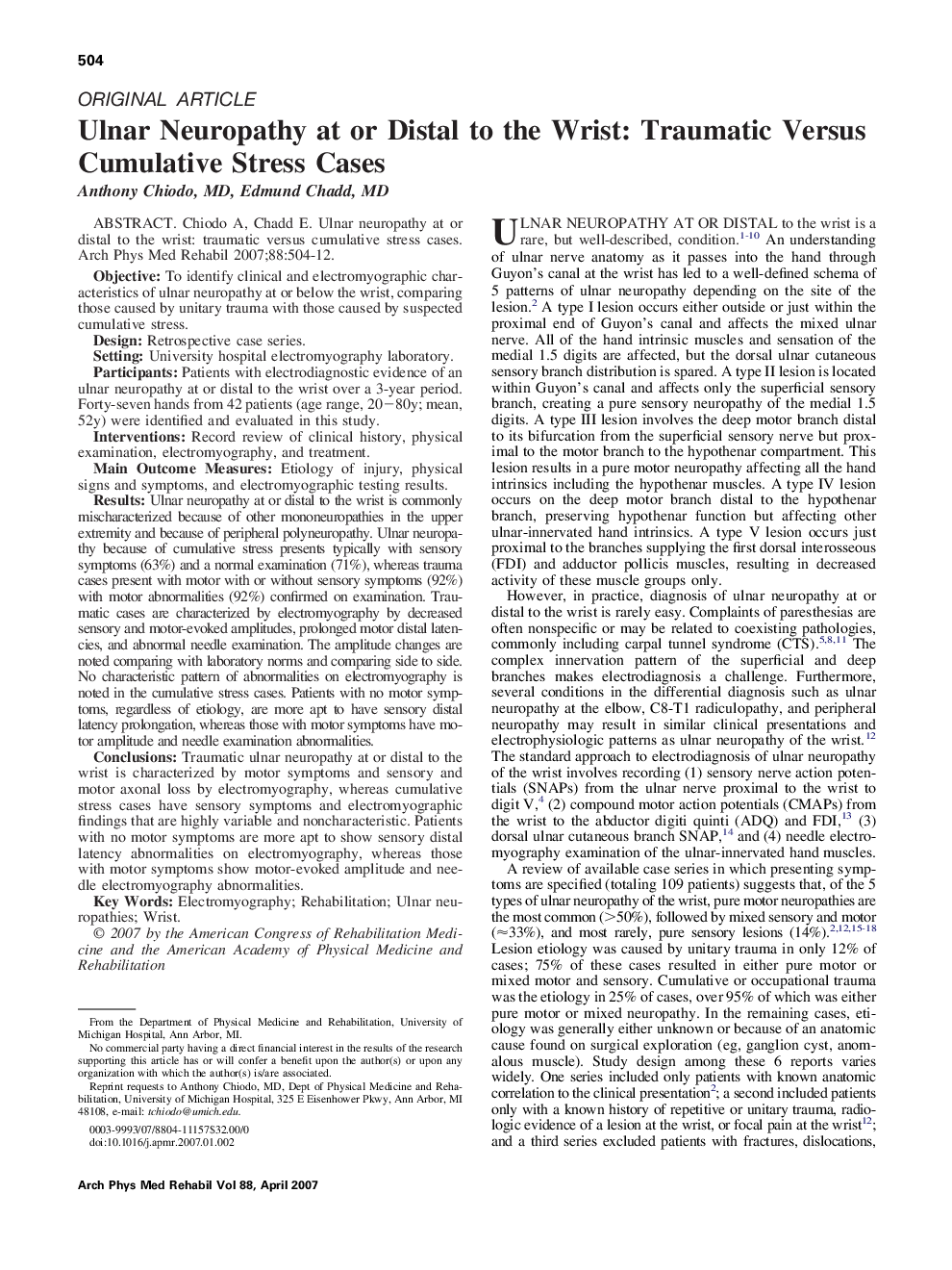| کد مقاله | کد نشریه | سال انتشار | مقاله انگلیسی | نسخه تمام متن |
|---|---|---|---|---|
| 3452956 | 1595794 | 2007 | 9 صفحه PDF | دانلود رایگان |

Chiodo A, Chadd E. Ulnar neuropathy at or distal to the wrist: traumatic versus cumulative stress cases.ObjectiveTo identify clinical and electromyographic characteristics of ulnar neuropathy at or below the wrist, comparing those caused by unitary trauma with those caused by suspected cumulative stress.DesignRetrospective case series.SettingUniversity hospital electromyography laboratory.ParticipantsPatients with electrodiagnostic evidence of an ulnar neuropathy at or distal to the wrist over a 3-year period. Forty-seven hands from 42 patients (age range, 20−80y; mean, 52y) were identified and evaluated in this study.InterventionsRecord review of clinical history, physical examination, electromyography, and treatment.Main Outcome MeasuresEtiology of injury, physical signs and symptoms, and electromyographic testing results.ResultsUlnar neuropathy at or distal to the wrist is commonly mischaracterized because of other mononeuropathies in the upper extremity and because of peripheral polyneuropathy. Ulnar neuropathy because of cumulative stress presents typically with sensory symptoms (63%) and a normal examination (71%), whereas trauma cases present with motor with or without sensory symptoms (92%) with motor abnormalities (92%) confirmed on examination. Traumatic cases are characterized by electromyography by decreased sensory and motor-evoked amplitudes, prolonged motor distal latencies, and abnormal needle examination. The amplitude changes are noted comparing with laboratory norms and comparing side to side. No characteristic pattern of abnormalities on electromyography is noted in the cumulative stress cases. Patients with no motor symptoms, regardless of etiology, are more apt to have sensory distal latency prolongation, whereas those with motor symptoms have motor amplitude and needle examination abnormalities.ConclusionsTraumatic ulnar neuropathy at or distal to the wrist is characterized by motor symptoms and sensory and motor axonal loss by electromyography, whereas cumulative stress cases have sensory symptoms and electromyographic findings that are highly variable and noncharacteristic. Patients with no motor symptoms are more apt to show sensory distal latency abnormalities on electromyography, whereas those with motor symptoms show motor-evoked amplitude and needle electromyography abnormalities.
Journal: Archives of Physical Medicine and Rehabilitation - Volume 88, Issue 4, April 2007, Pages 504–512